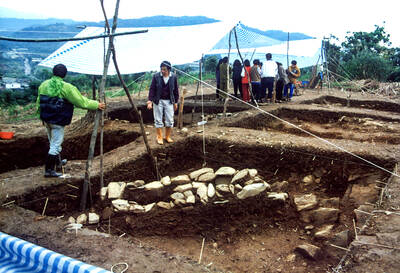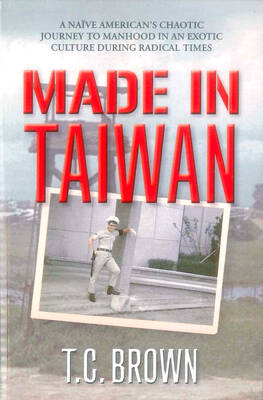VIEW THIS PAGE It’s noon in Taipei, 5am in Paris and midnight in New York as I take my seat in economy class. The seatbelt and no smoking lights have been switched on and the monitor on the wall shows a plane taking off. A “stewardess” comes over to take my order.
Taipei has seen its fair share of theme restaurants over the years. The Jail (惡魔島) shackled diners with handcuffs and crossed the limits of cultural sensitivity by hanging photos of Nazi concentration camps on its prison-like walls. DS Music Restaurant played on a hospital theme, complete with IV drips for drinks, wait staff dressed as nurses and hospital beds for tables.
A380 In-Flight Kitchen is named after the largest passenger airliner in the world. The restaurant looks and functions much like the Airbus it’s named after — though it only has one floor. “Passengers” sit in “first class,” “business class,” or, like this flyer, “economy class.” I was assigned seat 10A. Large comfortable blue chairs with headrests covered with white headrest covers emblazoned with the “airline’s” logo ensure optimum comfort for those long-haul meals. Stewardesses are dressed neatly in uniforms and dash back and forth with trays of “airplane food” or beverages on metal trolleys. A line of oval-shaped windows run along one side and look out onto a white “sky.”
The a la carte and set menus include foie gras filet mignon, vanilla lamb, dory and German pig knuckle (NT$480 for the set menu, NT$420 for a la carte), as well as chicken and pasta. There is also chicken spaghetti (NT$220) and stewed beef in red wine (NT$220) — both set meals and served in the same plastic trays found on airplanes. I went with the grilled US steak set menu (NT$480 set menu, NT$420 a la carte).
The iceberg lettuce salad came with some withered sprouts, chunks of moistureless cucumbers and an out-of-place wedge of sliced boiled ham. The miso dressing didn’t do much to enliven this salad, half of which I left in the bowl. The corn chowder soup wasn’t much of an improvement. It was tasteless and seemed to have come from a packet.
The steak was adequate and came with a dollop of mashed potatoes, a few green beans and baby corn. Cooked to my specifications — medium rare — it was served with a gravy-like sauce, the only purpose of which, aside from complementing the mashed potatoes, was to hide the generous marbling (dare I say gristle) of the beef. Dessert — coffee and sponge cake — was as memorable as the appetizer.
Although the decor is creative and the service prompt, the food will certainly not make me a “frequent flyer” in this mid-range family restaurant.VIEW THIS PAGE

Aug. 25 to Aug. 31 Although Mr. Lin (林) had been married to his Japanese wife for a decade, their union was never legally recognized — and even their daughter was officially deemed illegitimate. During the first half of Japanese rule in Taiwan, only marriages between Japanese men and Taiwanese women were valid, unless the Taiwanese husband formally joined a Japanese household. In 1920, Lin took his frustrations directly to the Ministry of Home Affairs: “Since Japan took possession of Taiwan, we have obeyed the government’s directives and committed ourselves to breaking old Qing-era customs. Yet ... our marriages remain unrecognized,

During the Metal Ages, prior to the arrival of the Dutch and Chinese, a great shift took place in indigenous material culture. Glass and agate beads, introduced after 400BC, completely replaced Taiwanese nephrite (jade) as the ornamental materials of choice, anthropologist Liu Jiun-Yu (劉俊昱) of the University of Washington wrote in a 2023 article. He added of the island’s modern indigenous peoples: “They are the descendants of prehistoric Formosans but have no nephrite-using cultures.” Moderns squint at that dynamic era of trade and cultural change through the mutually supporting lenses of later settler-colonialism and imperial power, which treated the indigenous as

An attempt to promote friendship between Japan and countries in Africa has transformed into a xenophobic row about migration after inaccurate media reports suggested the scheme would lead to a “flood of immigrants.” The controversy erupted after the Japan International Cooperation Agency, or JICA, said this month it had designated four Japanese cities as “Africa hometowns” for partner countries in Africa: Mozambique, Nigeria, Ghana and Tanzania. The program, announced at the end of an international conference on African development in Yokohama, will involve personnel exchanges and events to foster closer ties between the four regional Japanese cities — Imabari, Kisarazu, Sanjo and

By 1971, heroin and opium use among US troops fighting in Vietnam had reached epidemic proportions, with 42 percent of American servicemen saying they’d tried opioids at least once and around 20 percent claiming some level of addiction, according to the US Department of Defense. Though heroin use by US troops has been little discussed in the context of Taiwan, these and other drugs — produced in part by rogue Chinese Nationalist Party (KMT) armies then in Thailand and Myanmar — also spread to US military bases on the island, where soldiers were often stoned or high. American military policeman